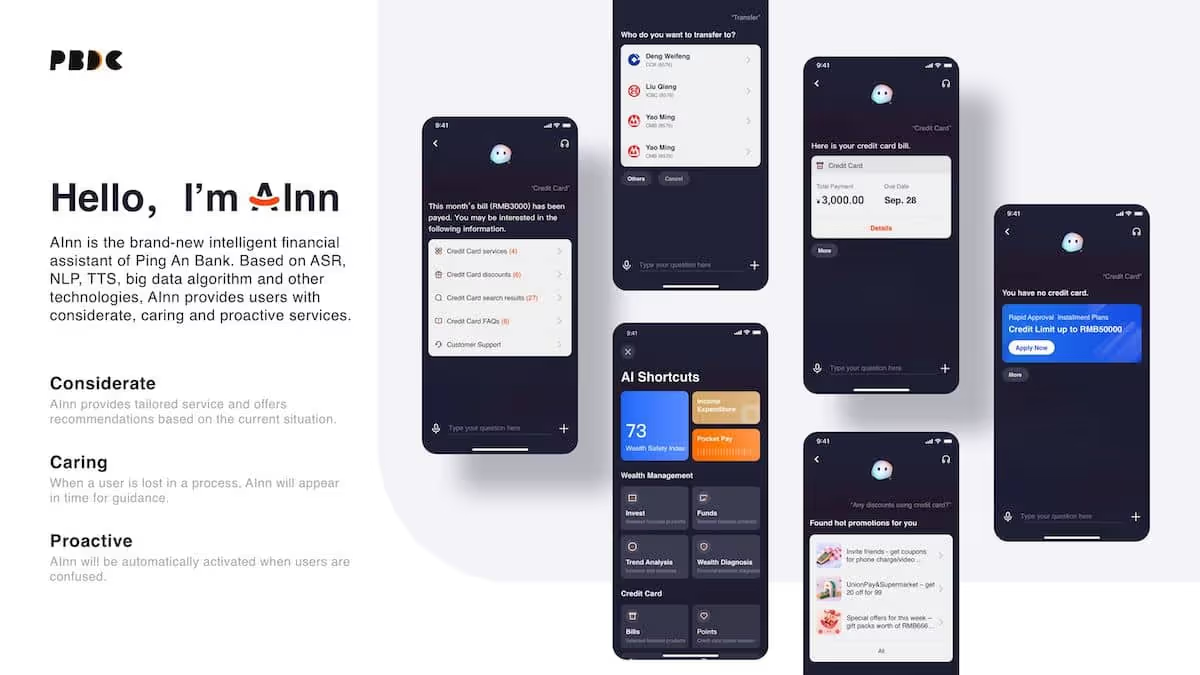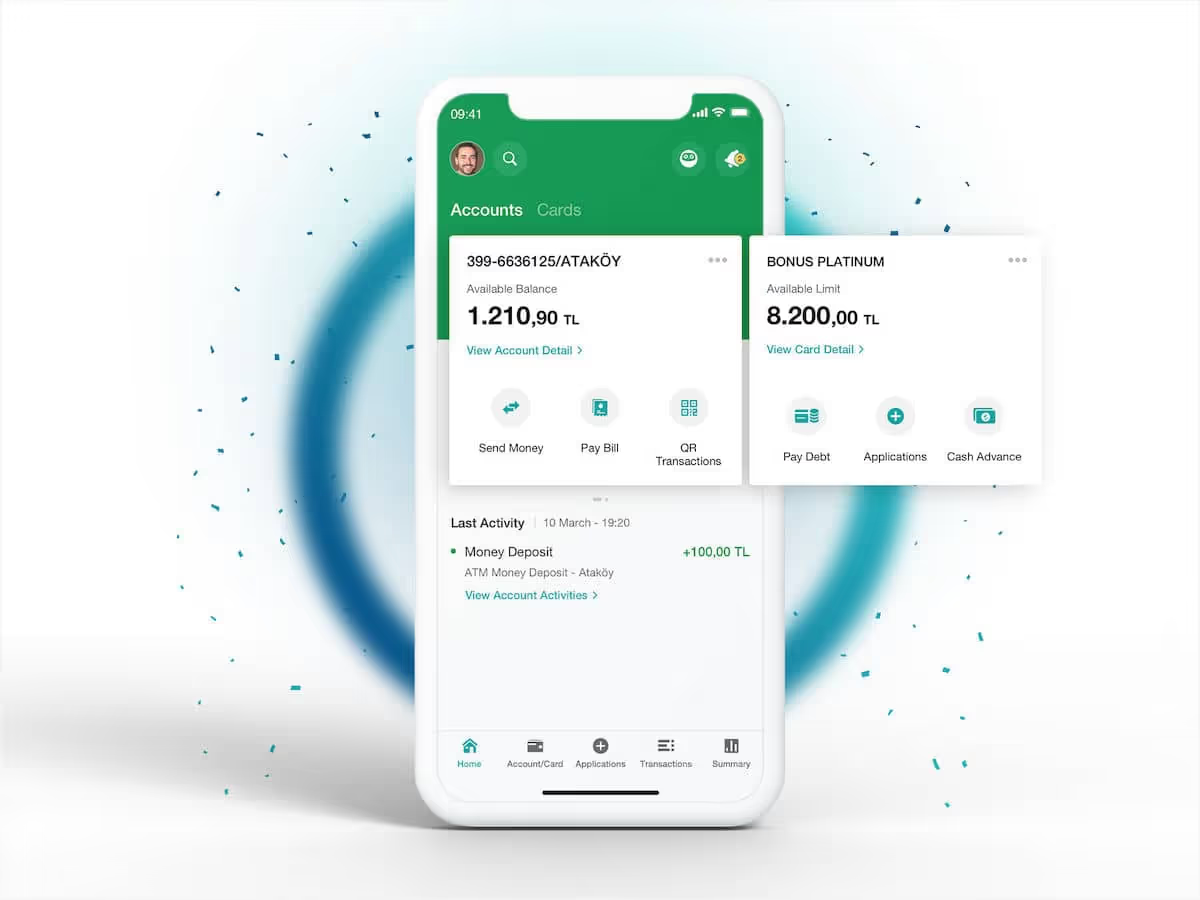A QUICK SUMMARY – FOR THE BUSY ONES
TABLE OF CONTENTS

Q3’23 saw the lowest amount of fintech funding since Q4’20. After a successful decade, the industry faces its first true test. Fintech funding fell 3%
QoQ to hit $7.4B in Q3’23, leveling off after seeing sharp declines in most quarters since the end of 2021.
How does the uncertain future shape financial product development paths across the globe?
In this article, we’re discussing what UX design trends should be on every fintech company's radar in 2025.
<blockquote><p>“Both public and private markets have limited horsepower to invest at this moment in time due to repricing of portfolios and protecting existing investments.”</p><p>— Nigel Verdon, CEO at Railsr, in an interview for Sifted.eu</p></blockquote>
During the past few years, fintech startups’ growth was the key value indicator. In 2025, profitability becomes the new focus.
How are the companies responding to the pivot?
One of the core goals for organizations is improved customer retention achieved by UX design optimization.
With increased pressure on achieving profitability, most businesses will look at ways to optimize their current operations. This includes a stronger focus on elevating the user experience of existing solutions and processes.
So, what features will we see more often in the upcoming months?
Here are 6 fintech design trends companies will focus on in 2025.
Personalization means adjusting the experience to an individual user’s needs. It’s often confused with customization — allowing users to choose between options, like selecting the styles, sizes, or placement of widgets on their screen.
The difference is that personalization relies on anticipating those needs and automatically showing users a relevant experience, which decreases the cognitive labor required on their side. And there is no better way to keep users engaged than by making them feel the app was designed just for them.
When fintech apps adapt to each user’s journey, not only will that make the users feel understood, but they also help prevent the sense of being overwhelmed with information.

Subaio, a Nordea-backed fintech startup, allows the bank’s Premium customers (who pay roughly $7 a month) to analyze, edit and cancel all their subscriptions within the banking app. All thanks to a partnership with Lunar — a subscription management platform.
The key benefit of personalized fintech design is allowing for satisfying the needs of a wider range of customers. Thanks to analyzing previous customers’ data, we may be able to create fintech products or services we might haven’t thought of when relying on traditional research methods.
Personalization increases:
It also helps to deeply analyze and micro-target individual customers.
In recent years AI has become a critical part of the fintech industry, and its popularity is on the rise. The main areas of AI usage include collecting and managing data, analyzing personal spending habits, as well as safeguarding and facilitating transactions. The capacity to provide customers with a personalized experience and perfectly tailored products will soon become a significant competitive advantage in the fintech market.

Fintin is a modular financial platform. It offers an intelligent, conversational interface based on natural language processing. The technology suggests customers personalized services based on their behavior and previous interactions with the business. It also manages instant communication for a perfect experience.

Ping An Bank is a Chinese joint-stock commercial bank headquartered in Shenzhen. For years, an AI financial assistant seemed like a faraway dream. Ping An Bank has made that dream a reality through AInn. Unlike other systems, AInn is considerate and proactive. It offers three key features: proactive service, timely advice, and smart recommendations. When a user is hesitant, AInn provides help even before the user asks. Timely guides pop up if a user gets lost in a process. Recommendations are made based on the individual and the situation.
Artificial Intelligence provides:
There are two types of biometric technologies. The first one, wider known as physical, relies on physical aspects like voice, fingerprints, or facial recognition. The second one, behavioral, relies on the recognition of behavior patterns that are impossible to capture and replicate. These two approaches can be successfully used in the fintech industry to improve systems’ or devices' security.

Garanti BBVA is a Turkish financial services company. Recently, the company incorporated iris recognition technology to improve the mobile app login experience and security. Each month, almost 850,000 sessions are logged in through iris recognition. Moreover, the feature enables customers to start a transaction with a simple glance at their phone's camera.

TypingDNA is a cybersecurity SaaS developing biometrics authentication solutions. One of their products, Verify 2FA, replaces SMS two-factor authentication with typing pattern identification — users retype displayed phrases while the tool measures typing rhythm and force. This allows for precise recognition without pulling the phone out of pocket.
The use of biometric technologies can help:
The times when one had to go to a local bank branch to tend to their business are long gone. Nowadays, third-party integrations allow personal finance apps to do way more than just transfer money. Users get access to a wide range of financial services right at their fingertips. Both an average Joe and a financial expert can find something to satisfy their needs.

Revolut is a British financial technology company that offers banking services. It allows users to open a bank account in minutes directly through a mobile app. Once the users access the app, they can view their spending analytics, manage subscriptions, split bills with others, create separate expense pockets, and manage investments — all in one place.
Providing one app that does it all allows companies to:
Blockchain is a distributed decentralized ledger that transfers authority to a decentralized virtual network and allows for the development of entire ecosystems of fintech apps. It records digital transactions in a way that can’t be manipulated or controlled by governments, banks, or companies. Blockchain can transform regular financial processes as we know them today into entirely digital, transparent, secure, and efficient procedures.

Wirex is a digital payment platform with a mission to make crypto and traditional currencies equal and accessible to everyone. The company promises real-time point-of-sale conversions, zero fees on foreign currency exchange, and up to 2% cryptocurrency rewards on all spending.
Blockchain makes it possible to:
BLIK payment is the most popular and standard payment method in Poland (90% of bank customers in Poland use BLIK). By connecting a phone number with a banking app, a user gets access to 6-digit codes that expire after two minutes. With those codes, customers can confirm online payments, transfer money to others, withdraw them from ATMs, etc. The idea was inspired by cashless smartphone payments introduced by Google and Apple.

BNP Paribas is the second-largest banking group in Europe and ninth in the world. Its mobile app GOMobile for the Polish market offers convenient and safe mobile payments with BLIK. The technology enables consumers to pay for both traditional and online shopping, as well as withdraw cash from ATMs, all without using a card.
The key advantages of BLIK include:
According to a study by IDC Financial Insights, outdated legacy technology could cost banks over $57Billion in 2028. The research also revealed some of the hidden costs of legacy paytech. Future-ready paytech offers additional capabilities that can boost revenue.
There's no doubt, legacy systems are a huge problem in the banking, and financial industry overall.
Legacy system modernization is a must in many cases, especially if the organization doesn't want to lose money. It can be done safely, f.ex. using blue/green deployments strategy.
In many cases, it will be also beneficial to follow fintech UX design trends:
Having investigated each of the fintech UX design trends dominating the market, you might feel lost about what your company should do next.
Short answer: it depends on what’s your core business activity.
There are 3 key trends you could consider implementing regardless of your company’s profile:
On the other hand, there are trends that will fit only specific types of fintech products:
All choices come with risks. With multiple factors affecting the effectiveness of implemented solutions, predicting a feature’s success isn’t easy.
What, then, can you do to secure the triumph?
Make sure you:
Since 2014, our UX design and software development experts have helped 67 fast-growing companies make impactful research-based decisions about their web, mobile, and desktop apps.
One fintech startup we had the pleasure to work with — GOKONG, came to us with the challenge to bring the health monitoring experience from Apple Health and Fitbit into personal finance management.
With intense product workshops, app's usability audit, in-depth competition and user research, we managed to build a product that, just 8 months after launch, was bought by a Swiss banking leader.

Curious what insights can we bring into your fintech app development roadmap?
Book a consultation with the same UX designers who impacted GOKONG’s success — Claim your date today.
Our promise
Every year, Brainhub helps founders, leaders and software engineers make smart tech decisions. We earn that trust by openly sharing our insights based on practical software engineering experience.
Authors
Read next
Popular this month